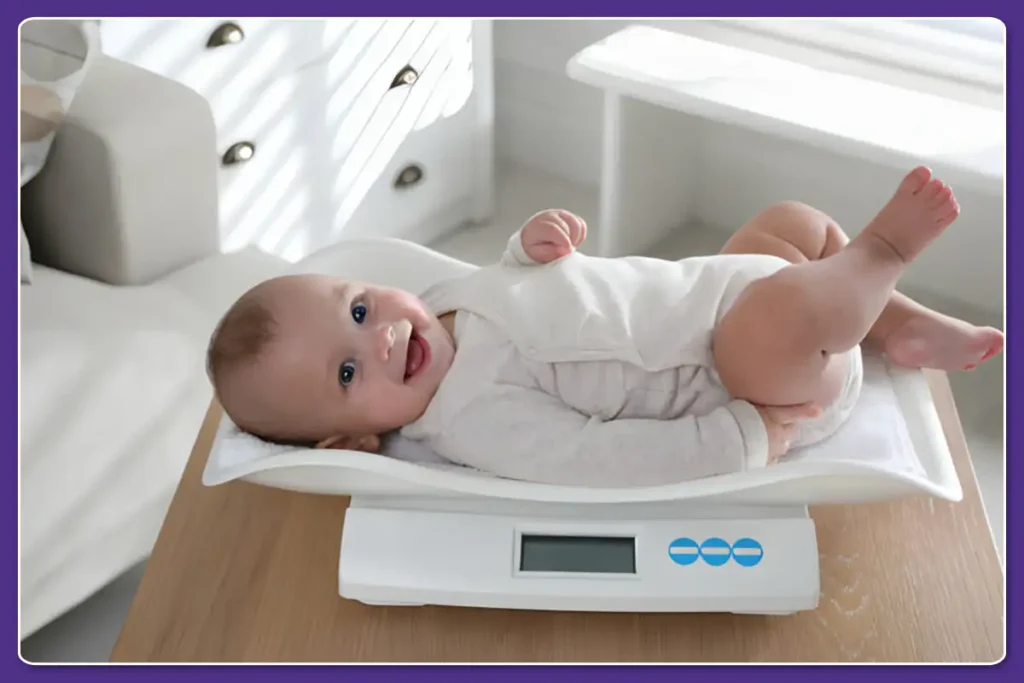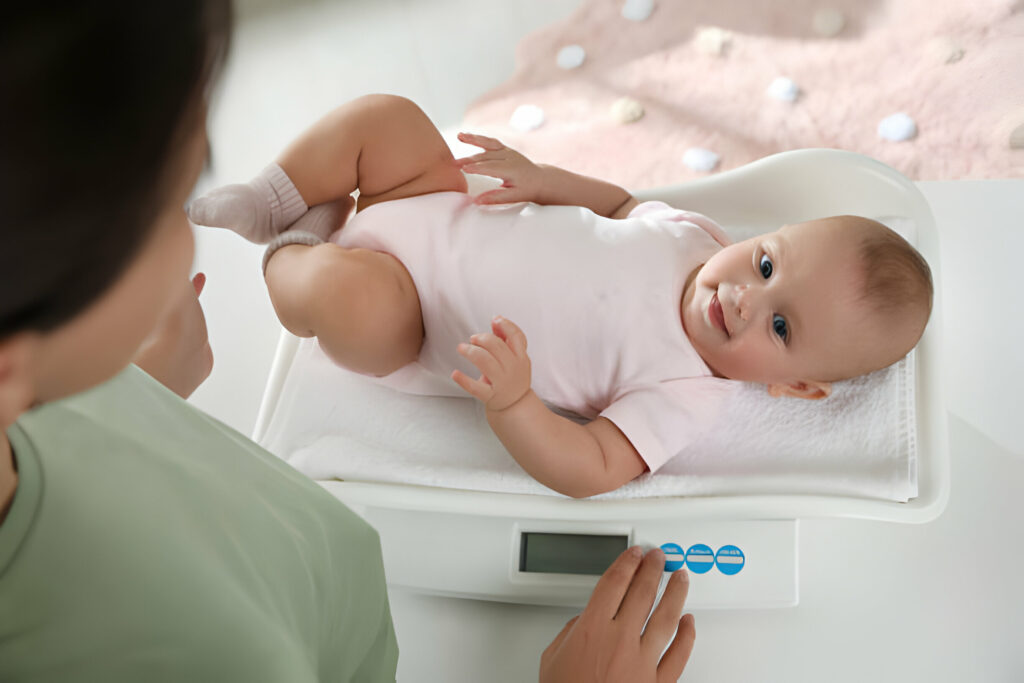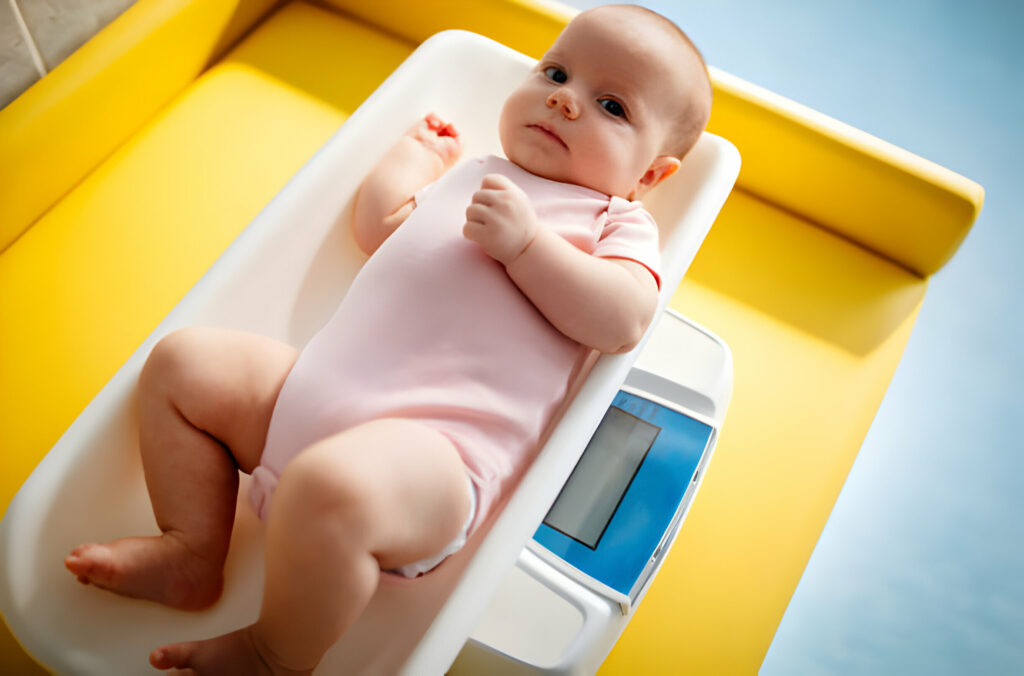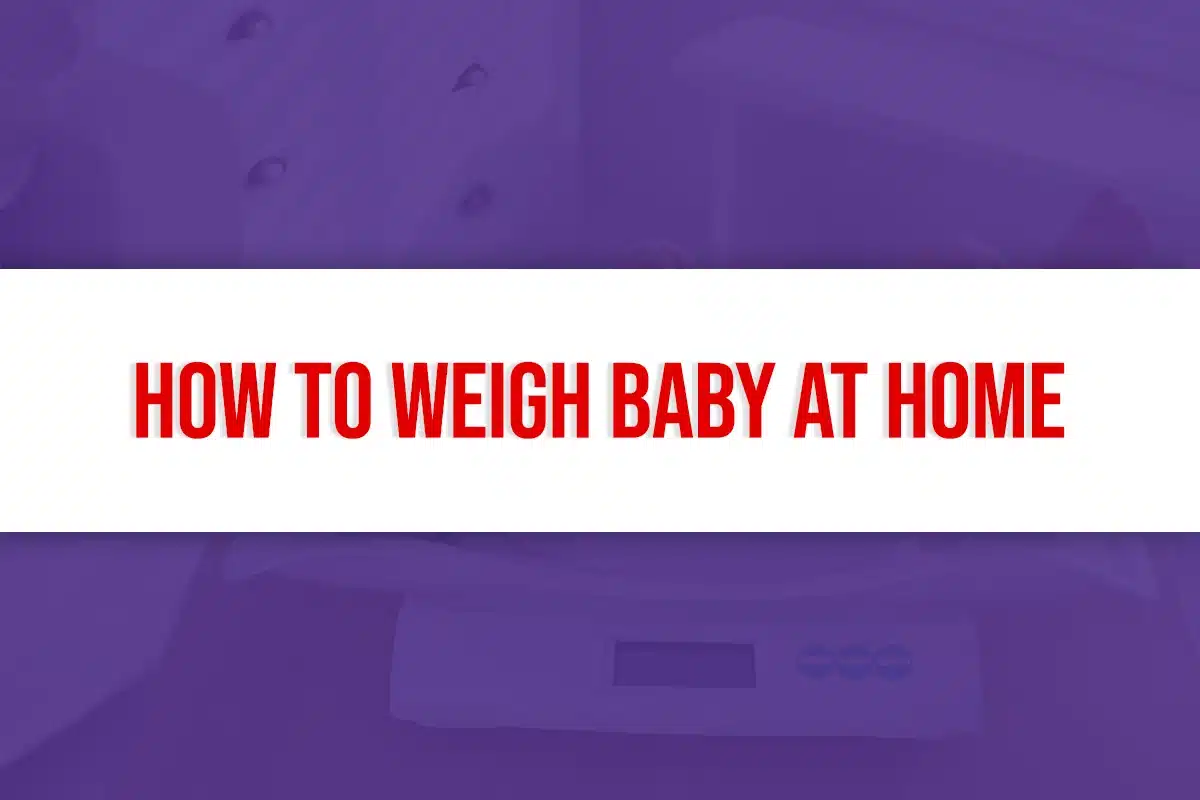Monitoring your baby’s weight gain is an important way to ensure they are growing healthy and strong. While pediatricians track growth metrics like weight during checkups, parents can easily keep progress between visits when they weigh at home. Weighing baby helps you catch issues early before they become serious.
This guide will cover everything about “How to weigh baby at home“.

Choosing the Right Baby Scale
The first step is to determine how to measure the baby’s weight at home is investing in an accurate, easy-to-use baby scale allows you to monitor weight between doctor visits. Consider the following when selecting a scale:
- Type of Scale: The main options are mechanical, digital, and convertible scales. Digital provide the most accuracy and data tracking.
- Weight Capacity: Make sure maximum weight exceeds baby’s estimated weight through infancy and early toddlerhood.
- Detachable Display: Allows you to view readings from any angle instead of leaning over baby.
- Safety Features: Important for wiggly babies. Look for non-slip pads, stable bases, and rounded corners.
- Measurement Units: Scales that switch between pounds and kilograms are most versatile.
Preparing for Weigh Ins
You’ll get the most accurate and least fussy weigh-ins by making it part of your normal routine. Before each weigh-in:
- Pick a flat, hard surface like the floor or kitchen counter where you’ll consistently measure. Soft surfaces skew readings.
- Place a towel or fabric on surface so it’s comfortable for baby.
- Have diapering supplies, wipes, and a change of clothes on hand in case of accidents.
- Feed baby and change diaper beforehand to avoid excess fussiness.
Establishing consistency and preparing supplies helps minimize frustration when you’re trying to measure squirmy little ones!

Technique for Weighing Baby
For children under two years old, pediatricians recommend weighing babies while naked before a morning feeding. This avoids variances from clothing, diapers, and intake.
🚧 Take proper precautions if weighing baby bare:
- Maintain room temperature of at least 72° Fahrenheit
- Work quickly to keep them comfortable
- Only remove diaper just before weighing
To weigh, place baby gently – and centered – on scale’s surface. Wait for display to calculate weight and lock measurement before removing them. Repeat measurement at least once more each session and record averages.
Using proper technique improves accuracy immensely over “best guess” readings.
Reading and Recording Measurements
Consistency is key when monitoring baby’s growth over time. Develop routines to accurately read, record, and track weight data.
Tips for Accurate Data Tracking
✔️ Read display precisely based on scale instructions
✔️ Double check readings before removing from scale
✔️ Record weight and date after each weigh-in session
✔️ Use app or weight chart to view progress
Having detailed records allows you and your pediatrician to catch concerning inconsistencies right when they start instead of at the next checkup.

Understanding Healthy Weight Gain
Since growth patterns vary drastically between breastfed and formula-fed infants, make sure to discuss goals with your pediatrician. Print out charts from the WHO or CDC so you can easily reference where baby aligns with healthy metrics.
Use the chart below for a general overview of expected monthly weight gain to monitor. Reach out to the pediatrician if you notice…
- Sudden increases/decreases
- No weight gain for period longer than 2 weeks
- Downward growth curve
These could indicate an underlying issue like feeding problems, illness, etc.
| Age | Target Weight Gain/Month |
| Newborn-3 mo. | 5-7 oz/week |
| 3-6 mo. | 4-6 oz/week |
| 6-12 mo. | 3-5 oz/week |
Small dips can be normal, but bring consistent odd numbers to the pediatrician’s attention – don’t try resolving without consulting them first.
Tips for Easy Weigh-Ins
Even with preparation, babies despise anything interrupting playtime – including weighing. Try these tips to make the process less painful:
- Engage them by allowing touch and play with the scale between measurements
- Offer favorite toy or book to distract during
- Swaddle infants to avoid flailing arms and legs
- Use sound machine to muffle cries
- Make it part of daily rituals so it becomes routine
You can also enlist a second person so one distracts while the other weighs if baby gets extra fussy.
Cleaning and Maintenance
Follow manufacturer guidelines for cleaning and use these tips to keep your scale in working order:
After Each Use
- Disinfect surface & display with sanitizing wipes
- Check display for error messages
- Wipe away any residue without getting moisture inside operational components
Ongoing Maintenance
- Replace batteries every 4-6 months
- Test accuracy monthly using free weights
- Address error codes immediately rather than ignoring
Frequently Asked Questions About How to Weigh Your Baby at Home?
It’s best to use a dedicated baby scale for accuracy and safety. Bathroom scales are not sensitive enough and baby could fall trying to use an adult scale.
Look for a digital baby scale with a detachable display, high weight capacity, precision sensors, safety features and convenience additions like Bluetooth connectivity. The American Weigh Scales Baby Scale is highly rated.
Try swaddling them snugly in a thin muslin blanket to restrict movement. Have toys on standby for distraction. Work quickly – undress, weigh, redress in under 30 seconds.
Aim to weigh 1-2 times per week to best track growth patterns. Notify your pediatrician if you ever observe abnormal weight gain/loss lasting 2 weeks.
Some babies do get stressed from weighing sessions. Make it fun, be efficient, comfort them after. There should be no harm from brief weighing done correctly. Consult your pediatrician if concerns.
Track their personal growth readings over time rather than comparing to averages alone since huge variation exists. Utilize standard WHO or CDC growth charts and discuss goals with your pediatrician.
Investing in a quality baby scale along with consistent weigh-in routines empowers you to catch small inconsistencies before they become problematic. Monitoring weight gain provides peace of mind baby is thriving and helps you enjoy all of the incredible milestones without as much worry. Hopefully, this article will help you to overcome the concerns about “How to weigh baby at home”.
Ready to explore further? Dive into How To Keep Baby Warm In Car Seat. Click here to discover more!







Comments are closed.